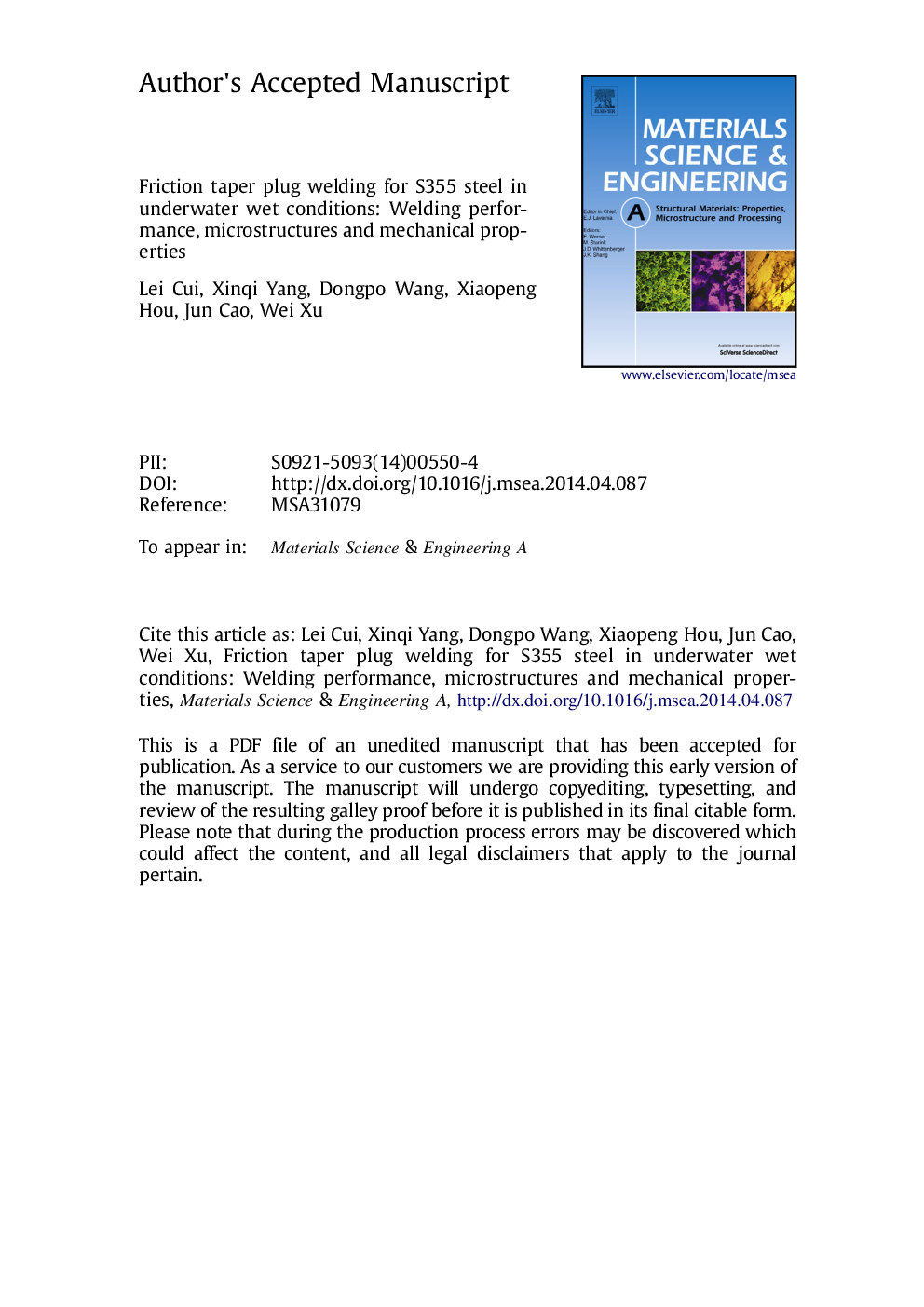| Article ID | Journal | Published Year | Pages | File Type |
|---|---|---|---|---|
| 7980959 | Materials Science and Engineering: A | 2014 | 33 Pages |
Abstract
The present work reports new results regarding developing the friction taper plug welding (FTPW) process in wet conditions for underwater welding and repairing solutions. In this study, the FTPW process, microstructures and mechanical properties of the weld are investigated. The main findings are as follows: defect-free FTP welds can be obtained with a 7000Â rpm rotational speed and an axial force of 30-50Â kN. In the heat-affected zone (HAZ) and the lower region of the weld metal (WM), a large volume of lath bainite and small amounts of acicular ferrite, polygonal ferrite, and martensite are observed. However, in the upper region of the WM, the microstructure mainly consists of lath martensite. The best results of ultimate tensile strength and V-notch impact energy are 500Â MPa and 39.5Â J, respectively, on the joint that was welded with a 45Â kN axial force. The impact failure is characterised by brittle fracture with a large area of cleavage and notably little quasi-cleavage and ductile.
Related Topics
Physical Sciences and Engineering
Materials Science
Materials Science (General)
Authors
Lei Cui, Xinqi Yang, Dongpo Wang, Xiaopeng Hou, Jun Cao, Wei Xu,
